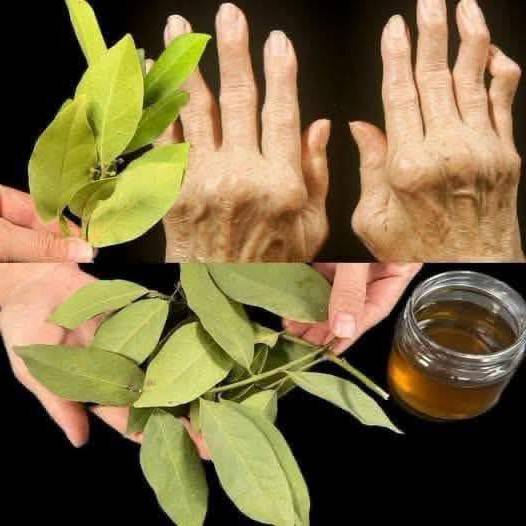ADVERTISEMENT
### Can Applying Bay Leaves to Your Joints Really Work?
While bay leaves are indeed packed with potentially beneficial compounds, the question remains: can simply applying them to your joints improve mobility and reduce pain? To answer this, we need to consider how bay leaves are typically used in traditional remedies.
#### 1. **Topical Applications: Oil Infusions and Poultices**
In many cultures, bay leaves are used in the form of essential oils or infusions to treat various ailments. To create a topical treatment for joint pain, bay leaves are often steeped in hot water or combined with carrier oils like olive oil, coconut oil, or almond oil. This mixture can be massaged into painful joints or used as a compress or poultice.
Some people believe that applying bay leaf oil directly to the skin can help alleviate pain and reduce inflammation, particularly in conditions like arthritis or muscle strains. While the essential oils in bay leaves may indeed have some therapeutic benefits, the concentration of active compounds is much lower in these home remedies than in concentrated commercial products designed for pain relief.
#### 2. **Bay Leaf Soaks and Baths**
Another popular way to use bay leaves is by adding them to a warm bath or soaking them in hot water to create a soothing infusion. Some people believe that soaking in a bay leaf-infused bath can help ease muscle and joint pain, as the heat and compounds in the leaves work together to reduce inflammation.
The heat of the bath itself can help relax muscles and joints, while the bay leaf infusion may provide additional relief. However, like topical applications, the effects of a bay leaf bath may be mild and temporary.
#### 3. **Internal Use of Bay Leaves**
In addition to topical treatments, bay leaves are sometimes consumed as a tea or in capsule form. Drinking bay leaf tea is believed to help with digestion, inflammation, and even joint pain. While drinking bay leaf tea may offer some internal benefits due to the anti-inflammatory properties of the compounds, it’s unlikely to produce dramatic results like “walking like a teenager” in just a week.
### Scientific Evidence: Does It Hold Up?
While bay leaves have been used for centuries in traditional medicine, the scientific evidence supporting their effectiveness for joint health is still limited. Most of the research on bay leaves and their compounds has focused on their antimicrobial, antioxidant, and anti-inflammatory properties.
Some studies have found that essential oils from bay leaves may have mild analgesic effects when applied topically, but these studies often use concentrated extracts or oils, not home remedies like bay leaf poultices or infusions.
Furthermore, joint pain and inflammation are complex conditions that often require multifaceted treatment. It’s unlikely that simply applying bay leaves to your joints will be enough to significantly improve mobility or relieve chronic pain.
For conditions like arthritis, osteoarthritis, or general joint discomfort, it’s important to consider a more comprehensive treatment plan that may include:
– Regular physical therapy
– Anti-inflammatory medications or supplements (e.g., glucosamine, turmeric)
– Exercise and stretching
– Proper nutrition to support joint health
– Consultation with a healthcare provider
### Alternatives to Bay Leaves for Joint Health
If you’re looking for natural ways to support joint health, there are several alternatives that have more substantial evidence backing their effectiveness:
#### 1. **Turmeric**
Curcumin, the active compound in turmeric, has been shown to have powerful anti-inflammatory and antioxidant properties. It has been extensively researched for its ability to reduce joint pain and improve mobility in people with arthritis and other inflammatory conditions.
#### 2. **Ginger**
Ginger is another anti-inflammatory herb that has been used for centuries to treat joint pain, muscle soreness, and inflammation. It can be consumed as a tea, in food, or taken in supplement form.
#### 3. **Fish Oil (Omega-3 Fatty Acids)**
Omega-3 fatty acids, found in fish oil, have been shown to reduce inflammation and improve joint function in people with rheumatoid arthritis and other inflammatory conditions.
#### 4. **CBD (Cannabidiol)**
Cannabidiol (CBD) has gained popularity as a natural remedy for joint pain and inflammation. Some studies suggest that CBD may help reduce pain and inflammation by interacting with the body’s endocannabinoid system, similar to the way caryophyllene in bay leaves does.
### Conclusion: The Truth Behind Bay Leaves for Joint Health
The claim that applying bay leaves to your joints will make you “walk like a teenager” in a week is a bit of a stretch. While bay leaves contain beneficial compounds with anti-inflammatory and analgesic properties, their effects on joint health are likely to be mild at best when applied topically.
For those looking for natural remedies to ease joint pain and improve mobility, bay leaves may offer some relief when used in conjunction with other treatments. However, relying solely on bay leaves for serious joint issues may not be enough to achieve lasting results. If you’re struggling with joint pain, it’s always a good idea to consult with a healthcare professional who can help guide you toward effective treatments.
In conclusion, while bay leaves may have some potential as a natural remedy for joint pain, they should not be viewed as a miracle cure. A holistic approach that includes proper exercise, nutrition, and medical advice is the best way to maintain healthy joints and improve mobility over time.
—
This article breaks down the claim about bay leaves for joint health and provides a balanced view on their potential benefits, backed by historical and scientific insights.
